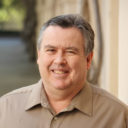12 Life Parallels between St. Augustine and C. S. Lewis
When I was a Roman Catholic in my younger days I heard a priest say: “Find a saint in church history that you greatly relate to and follow him or her through your life as a friend and as a spiritual role model.” Of course, some Christians would insist that they are exclusively “Jesus followers” and have no need to follow, let alone have devotion to, Catholic saints. But even though I later became a Protestant, I think to some extent I have appreciated and followed that priest’s advice.
My two favorite Christian thinkers outside of biblical figures and authors are Augustine of Hippo (354-430) and C. S. Lewis (1898-1963).1 St. Augustine, a Catholic, lived in the ancient world (late antiquity) and deeply influenced Western Christendom, including Catholics and Protestants. C. S. Lewis, a Protestant, lived in the modern world (twentieth century) and, though Anglican by denominational affiliation, his idea of mere Christianity has appealed to Christians from various theological traditions.
Interestingly, these two great Christian thinkers and writers have a significant number of striking parallels in terms of their lives and Christian ideas (theological-apologetic). This similarity came to light in 2013 when members of InterVarsity’s Emerging Scholars Network (ESN)—in a bracket similar to the NCAA Division 1 Men’s Basketball Tournament—selected 64 classic books written by Christian authors in four categories: (1) Theology & Apologetics, (2) Christian Life & Discipleship, (3) Fiction & Poetry, and (4) Memoirs, Devotionals, & Spirituality. At the end of the intense voting, St. Augustine’s Confessions emerged as “The Best Christian Book of All Time”2 and C. S. Lewis’s Mere Christianity was runner-up.
The top eight voted books also included The City of God by Augustine and The Chronicles of Narnia by Lewis. So both Augustine and Lewis had two books in the final eight selections—a remarkable accomplishment for two of Christendom’s finest thinkers and writers.
A Dozen Parallels between St. Augustine & C. S. Lewis
Micheal Hickerson, the former Associate Director for the Emerging Scholars Network, identified nine parallels.3 I then arranged them somewhat differently by adding some elements to those similarities and identified several more.
1. Born in Declining Empires: Both were born in provinces of great empires and were writing during the decline of those specific kingdoms. Augustine was born in the city of Thagaste (now Souk Ahras, Algeria) in the Roman Empire’s province of Numidia. In fact, Augustine’s book The City of God was, in part, an apologetic response to the charge that the emergence of Christianity had caused the decline of the Roman Empire. Lewis was born in Belfast, Ireland, which is part of the United Kingdom. Lewis was educated in England and taught there over his career but was proud of his country of birth. Hickerson notes: “I’m not sure if we, as modern Americans, appreciate how much of an outsider each of them were in their day.”4
2. Influential Mothers-Distant Fathers: Both had devout Christian mothers who introduced their sons to the faith and had an enduring influence on their boys as they became men. Monica prayed for Augustine’s return to the faith for many years. Flora, the daughter of an Anglican clergyman, died when Lewis was nine years old but she had a deep influence on her son. Her premature death devastated Lewis’s world. Augustine’s father Patricius was a pagan but was baptized on his deathbed. Lewis’s father Albert was a Christian. But both Augustine and Lewis were estranged from their fathers. To use the modern description, both came from caring yet dysfunctional families.
3. Renounced the Faith in Their Youth: Both questioned and ultimately rejected their Christian roots as young men and pursued non-Christian philosophies of life. For nine years Augustine embraced Manichaeism (a dualistic religious cult with Christian, Gnostic, and pagan elements). Upon leaving the Manichees he adopted a form of philosophical skepticism. In Lewis’s case, the death of his mother combined with the estrangement of his father and being tutored by an ardent atheist led Lewis to embrace atheism.
4. Lived with Women Outside of Marriage: Both lived for years with women they were not married to. In his late teens Augustine moved to the city of Carthage and began a sexual relationship with a young woman. Though Augustine’s mother Monica warned him to avoid fornication, the woman remained his lover for years and she gave birth to his son Adeodatus. Lewis took care of the mother of his friend Paddy Moore, who was killed in World War I, for more than 20 years. Some Lewis scholars believe Lewis’s relationship to Jane Moore was initially sexual in nature. Yet, upon their conversions to Christ, both Augustine and Lewis lived exemplary lives.
5. Academics and Orators of the Highest Reputation: Both had prestigious academic careers in their respective empires and became great speakers. Augustine, a specialist in rhetoric, taught at schools in Carthage, Rome, and Milan. Before his conversion to Christianity, Augustine was on the fast track to being a spokesperson for the emperor. Lewis was a tutor and college lecturer in medieval and Renaissance literature in England’s two great medieval universities: Oxford and then Cambridge. During World War II, Lewis presented highly publicized talks on the BBC.
6. Dramatic Conversions: Both experienced two of the great conversions in Christian history. They became Christians or returned to their given faith in their early 30s after reflective wrestling with great books and with the significant help of famous mentors. The books that helped Augustine move toward Christianity included the Greek philosopher Plotinus’s work Enneads, Athanasius’s biography entitled Life of St. Antony, and his study of Scripture. Augustine’s great mentor was Ambrose, the Bishop of Milan, who was later honored—along with Augustine—as a Doctor of the Church. Ambrose had the ability to answer Augustine’s theological and biblical objections to the faith. Two books that Lewis mentions as helping him toward the faith include Phantastes by George MacDonald and The Everlasting Man by G. K. Chesterton. Members of the Inklings, which included the great writer J. R. R. Tolkien, helped answer Lewis’s questions.
7. Spokespersons for the Faith: Both became highly visible spokesmen for Christianity. Augustine became a Catholic priest and bishop and was, during the latter part of his life, one of the most prominent Christians in the entire Roman world. Lewis was an Anglican layman but became one of the most recognized Christian thinkers in the English-speaking world—even being featured on the cover of Time magazine.
8. Prolific, Prominent, and Diverse Authors: Both thinkers were immensely productive, distinguished, and varied in their scholarly and popular works. Augustine was an intensely bookish person with a preoccupation for reading and writing books. Hence, over his lengthy lifetime, Augustine’s writings exceeded five million words, making him the most productive author of antiquity.5 Lewis was an equally bookish person and wrote some thirty books along with thousands of letters and articles.
9. Authors of Literary and Christian Classics: Both authors wrote books that are literary and Christian classics. The Great Books of the Western World series, edited by Mortimer Adler, contains books by Augustine (On Christian Doctrine) and Lewis (The Abolition of Man). And as noted above, the ESN voted Augustine’s Confessions and Lewis’s Mere Christianity the two best Christian books of all time.
10. Longing and Desire for God: Both emphasized that universal human yearning and desire for something deeper in life can only be satisfied by a relationship with God. The general theme of Augustine’s Confessions is that rest and peace for the human soul can only be found in God. In Lewis, the theme of human longing satisfied only in God is seen in his argument from desire.
11. Developed Theodicies: Both critiqued the strong skepticism of their times and offered theodicies to account for the problem of evil, pain, and suffering. Augustine argued that while evil is real, it is not a substance and neither is it “stuff.” Rather, evil is a privation (an absence of goodness in the human will). Therefore, God did not create evil. In Lewis’s book The Problem of Pain, he develops free-will defense and soul-making theodicies. Further, upon the death of his wife, Joy, Lewis wrote A Grief Observed, which reflects his personal encounter with sorrow.
12. Universal Christian Voices: In a sense, both have become universal Christian voices within Christendom. While Augustine is less influential in Eastern Christendom, he is clearly the uniting bridge between Catholics and Protestants in the West. Lewis is read and largely appreciated by Christians throughout Christ’s universal church.
On Following a Mentor
Coming back to my priest’s exhortation to “find a saint,” Augustine and Lewis are the two Christian thinkers and pilgrims I most relate to. I follow them as friends and spiritual role models. Of course, both of these mentors point me back continually to Scripture and thus to Jesus Christ and the triune God of historic Christianity.
Reflections: Your Turn
Do you have a favorite Christian writer (outside the biblical authors) who serves as an encouraging pilgrim in the Christian life? Visit Reflections on WordPress to comment.
Resources
- If you would like to learn more about St. Augustine and C. S. Lewis, I invite you to read my book Classic Christian Thinkers: An Introduction, chapters 3 and 9.
- Here is my introduction to Augustine’s Confessions.
- For Augustine’s literary accomplishments, see my article “3 Things You May Not Know about St. Augustine the Writer.”
- Here is my introduction to Lewis’s Mere Christianity Take Up and Read: Mere Christianity.
Endnotes
- Yet I would be remiss if I didn’t mention other thinkers in church history that I admire and have learned a great deal from, such as Irenaeus, Athanasius, Anselm, Aquinas, Luther, Calvin, and Pascal to name a few. For a primer on nine of my favorites from church history, see Kenneth Richard Samples, Classic Christian Thinkers: An Introduction (Covina, CA: RTB Press, 2019).
- Micheal Hickerson, “The Best Christian Book of All Time: The Winner,” Emerging Scholars Blog, April 5, 2013.
- Hickerson, “The Best Christian Book.”
- Hickerson, “The Best Christian Book.”
- Guy G. Stroumsa, The Scriptural Universe of Ancient Christianity (Cambridge, MA: Harvard University Press, 2016), 66.






